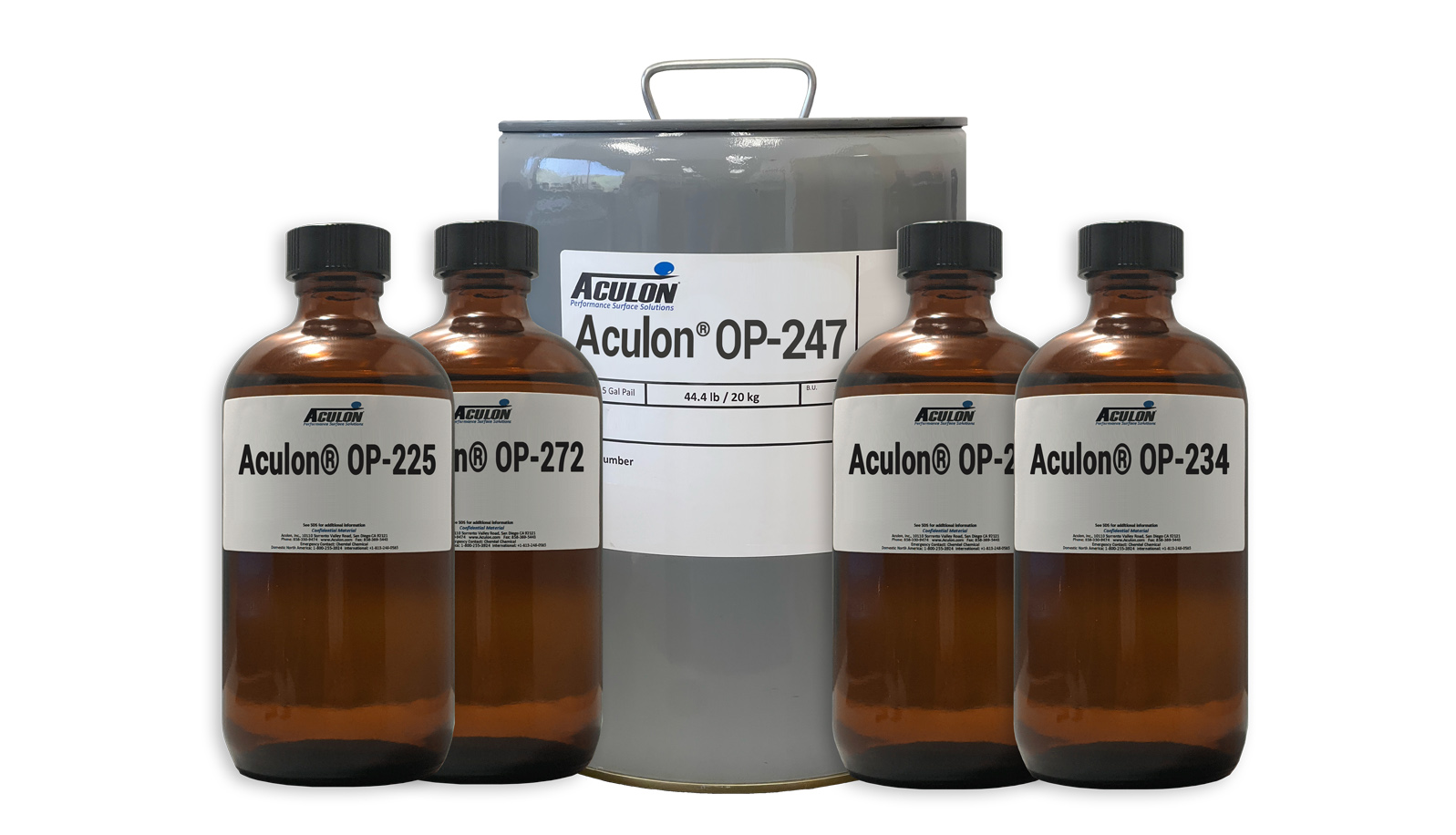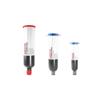OP-225 | Nano-Scale Adhesion-Promoting Surface Treatment
- Improved adhesion strength of paints/coatings on metal surfaces
- No outgassing
- No stress build-up on the substrates
Product Description
Aculon OP-225 is a precision-engineered, nano-scale surface treatment designed to significantly enhance adhesion of coatings on metallic substrates. Compatible with a wide variety of metals and metal oxides, OP-225 is especially effective for coatings that cross-link via olefinic (vinyl) functional groups, such as silanes and radiation-cured systems.
Delivered as a clear, low-viscosity solution in methanol, OP-225 forms a chemically bonded nanolayer (2–4 nm) that remains invisible and stress-free, while delivering measurable improvements in coating durability, chemical resistance, and bond strength.
Applications:
- Improve the adhesion of over-mold compounds on lead frames
- Boost the performance of radiation-curable coatings on metal parts
- Prevent delamination in electronics and sensor modules
- Promote silane bonding in high-temperature molding applications
Technical Specifications
| General Properties | |||||
| Color Color The color | Clear | ||||
| |||||
| Physical Properties | |||||
| Viscosity Viscosity Viscosity is a measurement of a fluid’s resistance to flow. Viscosity is commonly measured in centiPoise (cP). One cP is defined as the viscosity of water and all other viscosities are derived from this base. MPa is another common unit with a 1:1 conversion to cP. A product like honey would have a much higher viscosity -around 10,000 cPs- compared to water. As a result, honey would flow much slower out of a tipped glass than water would. The viscosity of a material can be decreased with an increase in temperature in order to better suit an application | 0.6 mPa.s | ||||
| Electrical Properties | |||||
| Visible Light Transmission | 100 % | ||||
| Thermal Properties | |||||
| Boiling Point Boiling Point The amount of degree’s needed to reach in order to make the substance boil. | 65 °C | ||||
Additional Information
Surface Preparation/ Cleaning:
Ensure that the surface is free of any grease, fingerprints or dirt (i.e., water break free). This can be accomplished by first degreasing the surface with solvents or by rinsing with soap and water. The next step is to remove monolayer-scale contaminants. This is typically performed by using a cleaner specifically designed for the metal you are working with. Contact Aculon if you are unsure what cleaner to use and we will recommend one best suited for your application. The substrate should be water break - free before continuing to coating steps.
Treatment Application:
Spray: Spray the solution onto the substrate using doubl e passes. Post-application curing is recommended for best performance. Spray Equipment Suggestions: HVLP (Binks Mach 1), HVLP (Devilbiss JGHV), Air Atomizatation (Devilbiss MBC gun), and Airless (Graco Model 225-292 President Pump Series A)
Dip: – Immerse the substrate in the solution for five minutes. If a shorter dip time is necessary, then a post-cure is recommended for optimal performance (sonication while dipping can boost performance in some cases).
Dip Coating with Sonication: Ensure the substrate is clean. Completely submerge the substrate in the solution and sonicate for five minutes. Remove substrate from the solution and allow to air dry , preferably in a clean area.
Drying/ Curing: If curing is necessary (short dip times or spray-application), the treated substrates are best cured at 120C peak metal temperature for approximately 30 seconds. For silicon and titanium
oxides, lengthening the cure time to 5 minutes is recommended.
*Note: If OP-225 is being used to adhere a high viscosity or low-reactive resin system, especially if such coating is not cured after application, then it is suggested to do a post cure rinsing step (or post-treatment rinse if curing was not
performed) for best performance. Furthermore, if a UV-curable coating system is being used, then it may be necessary to modify the curing parameters to ensure sufficient radical generation near the surface of the monolayer
to achieve optimal adhesion. In certain cases it is also possible to directly blend the active materials into a coating;
Safety, Handling, Storage, Shelf Life:
Store in a cool (~25C) and dry area, and keep away from direct sun light. See this product’s MSDS for proper handling and fire hazard data. When stored properly, product has a 2 year shelf life from the date it is opened.




